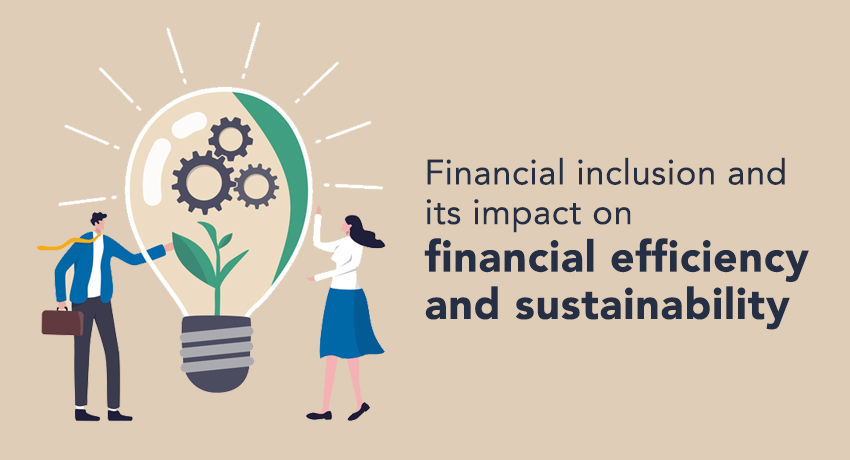Financial Inclusion and Its Impact on Financial Efficiency and Sustainability

The Indian regulators are cognizant of the significance of financial inclusion to achieve economic growth and the fact that to achieve the said objective, equitable growth opportunity through inclusive financial services is primary.
India being a diverse country with a noticeable disparity in income and education across levels acts as an opportunity and challenge both, for financial institutions. Where institutions have the liberty to innovate, customize and offer customer-centric solutions, they also face the challenge of reaching the interiors of India. Hence, exposure to financial services has also been uneven in various parts of India where financial exclusion is due to income disparity, financial illiteracy, high transaction cost, infrastructure cost, lack of documents, remoteness, etc.
Financial inclusion implies that all adult members of society are given basic personalized financial services that begin with bank accounts, deposits, transactions, etc. For instance, accounts opened through Jan Dhan Yojana for farmers have increased the circulation of money in the market owing to an increase in savings accounts, larger agricultural output due to subsidies and therefore, household expenditure.
It is important to note that financial stability plays a major role in attaining financial inclusion, efficiency and sustainability. Despite this fact, it is often neglected in financial development comparisons; partly due to the lack of data required for the analysis.
While moderate synergy between inclusion, efficiency and sustainability is expected to give positive output, growing financial inclusion negatively adversely affects financial efficiency while showcasing a favorable influence on financial sustainability. Therefore, through the process, considerable attention must be paid to financial efficiency.
At the G20 Summit held in Seoul, South Korea in 2010, financial inclusion was recognized as one of the 9th key pillars of global development and this comes through financial development; an inextricable part of the growth process.
Financial inclusion enables improvement in quantity, quality and efficiency of financial intermediary services which can be attained through lower banking costs, greater proximity to financial intermediaries, better institutions for stronger legal rights and politically stable environments. Apart from the stated challenges, a few fundamental challenges are as follows-
- Lack of skill to use digital technology and services.
- Implementation without an actual success rate – For instance, Jan Dhan Yojana managed to open a considerable number of accounts that never witnessed any transactions. This proves to be a cost rather than a success story.
- Being a cash-dominated economy, bringing a paradigm shift to digital adoption may face unusual challenges. Moreover, over 80% of the Indian population work in the informal sector which is heavily cash oriented and therefore, bringing them to digital adoption may take longer than anticipated.
Financial efficiency and sustainability is a sequel of financial inclusion which is considered a success when micro-inclusion shows a positive trend in analysis and this trend can be achieved by targeting the bottom of the pyramid which will also help in achieving financial stability in the long run.

